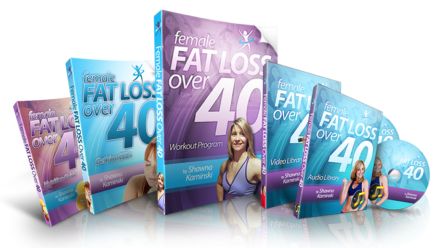6
Sep 14

Amy asked: I’ve noticed that some fitness experts recommend doing 20 minutes of HIIT 3x a week, while others say to do it every day. What do you and Shawna recommend?
Lisa replied: I receive a lot of emails from women who are confused about the difference between “Intensity” and “High Intensity Interval Training” (HIIT). Shawna and I want you to ALWAYS approach your workouts with Intensity but recommend that you complete HIIT training no more than 3 times a week. They’re two different things.
Intensity is one issue – it’s lifting heavy, it’s moving through conditioning workouts quickly, it’s really putting in to every single rep. And that’s what our workouts are all about. Working with intensity and purpose.
HIIT or metabolic bursting as it’s sometimes referred to is working at extremely high intensity, up to 9/10 effort, for short bursts of work of sprint type activity, with longer periods of recovery. For example, I did a workout last week from Mike Whitfields Sprint Conditioning program which required me to sprint for 10 seconds and recover for 1 minute. I needed that whole minute to recover because the 10 seconds of work was flat out effort. The clue to how hard you’re working is how quickly you recover – if you recover very quickly, chances are you need to work harder. How you rate your 9/10 is very personal – it’ll relate to your own level of fitness.
Now let’s complicate this picture just a tad; I chose to do flat sprints for Mikey’s workout and those sprints were done as a HIIT session because I put in the 9.99/10 effort, but one of my less fit friends chose different exercises that she could better manage – she worked very hard for her level of fitness. She swapped out the sprints for skipping and Total Body Extensions and pushed hard but she rated her exertion as 8/10. So we would describe her training as intervals with intensity but not HIIT.
So keep training with intensity – excellent! If you have the fitness, work hard on no more than three sessions of HIIT a week – less than 20 minutes of total work with each smoking-hot-intense burst of activity requiring at least double the work time in recovery. If you recover too quickly, you didn’t work hard enough.
HIIT is very trendy right now, and lots of fitness people who should know better are using the expression inaccurately to describe their workouts. Pushups can be intense, but they don’t qualify as HIIT exercises. I hope that clears some confusion.
Samantha asked: I’m a bit of a diet junkie and I like trying different diets but I quickly become bored. I’m 51 and my body is changing, I think I’m even a different shape from when I was 40. My daughter and I did a diet over summer and she lost weight really quickly but nothing really happened for me? I hate my belly flub and just want to lose 10lb – it’s so frustrating and I get upset and struggle to stay with my healthy eating.
Lisa replied: It’s like hitting 40 years of age is a magic button isn’t it! For many of us, losing body fat becomes a long hard struggle. It isn’t as easy as when we were in our 20’s, that’s absolutely true! But only a diet (and I really mean a style of eating) that is sustainable long term will make permanent changes. And though it’s not sexy to say so, it’s the adoption of long term, consistent habits that will make the ultimate difference.
Mindful eating is what will change your waistline long term. Making careful choices 90% of the time, eating slowly, never eating till you’re stuffed and eating whole clean foods is what counts. A lady who knows exactly what it’s like to struggle with her weight and WIN has a nutrition guide that might be helpful to you. Maureen Garry developed Flat Belly Breakthrough after her own struggles in her 40’s. Her eating plan is specifically for women of our age who struggle with their weight and constantly battle hormonal weight gain.
Remember you can always shoot me an email with your own questions – Shawna and I love answering your queries and trying to settle fitness and nutrition confusion. Health and fitness isn’t easy but the principles should always be simple.




 My passion is teaching people how to work fitness into their daily lifestyle in order to improve their quality of life. Let’s work together to help you reach your fitness goals!
My passion is teaching people how to work fitness into their daily lifestyle in order to improve their quality of life. Let’s work together to help you reach your fitness goals!